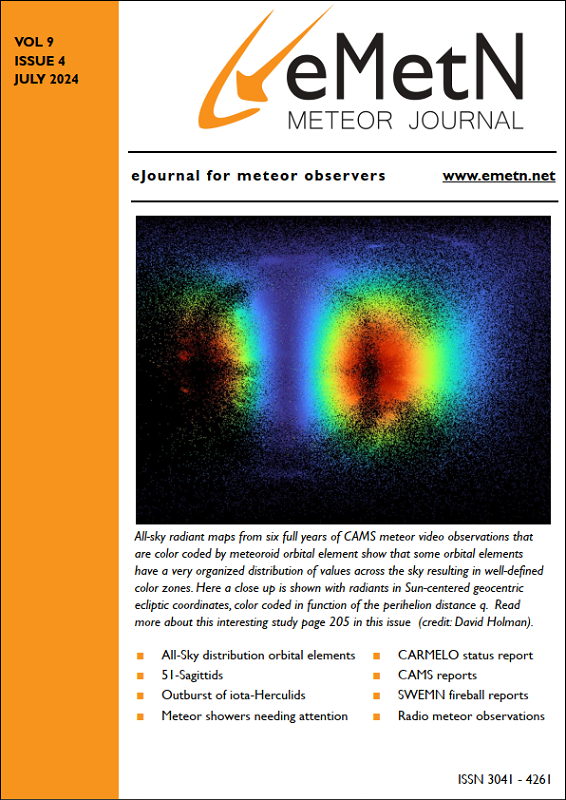Ivan Sergei
Mira Str.40-2, 222307, Molodechno Belarus
astroseriv@yandex.by
Abstract: This article presents the results of radio observations made in August 2021. The results of the radio observations are compared with the CAMS video network summaries.
1 INTRODUCTION
The observations were carried out at a private astronomical observatory near the town of Molodechno (Belarus) at the place of Polyani. A 5 element-antenna directed to the west was used, a car FM-receiver was connected to a laptop with as processor an Intel Atom CPU N2600 (1.6 GHz). The software to detect signals is Metan (author – Carol from Poland). Observations are made on the operating frequency 88.6 MHz (the FM radio station near Paris broadcasts on this frequency). The “France Culture” radio broadcast transmitter (100 kW) I use is at about 1550 km from my observatory which has been renewed in 1997.
2 Automatic observations
High activity of the Perseids (#0007) was recorded from August 11 to 14. Increased activity of meteor signals around August 17 may be associated with the activity of the meteoroid stream KCG (#0012).
According to IMO visual data, high Perseid activity lasted from August 13 to 15 (https://www.imo.net/members/imo_live_shower?shower=PER&year=2021), see also Miskotte et al. (2021), which correlates satisfactorily with radio observation data. The origin of the short burst of activity on August 11 from 11h to 15h UT, is unclear. Perhaps this event is related to a short flaring up of the Perseids. Increased shower activity was recorded between 16h–19h UT on August 14 and 01h–06h UT on August 15.
Figure 1 shows the hourly rates of radio meteors in August 2021 at 88.6 MHz. Figure 2 shows the corresponding heat map.
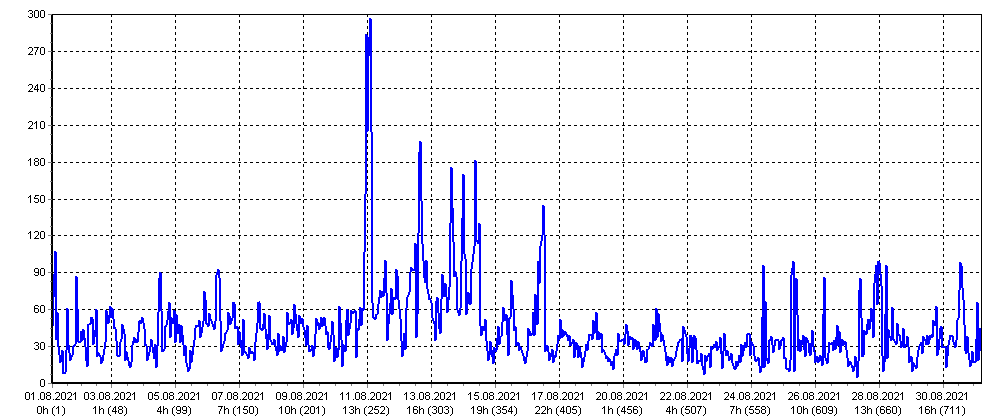
Figure 1 – Radio meteor echo counts at 88.6 MHz for August 2021.
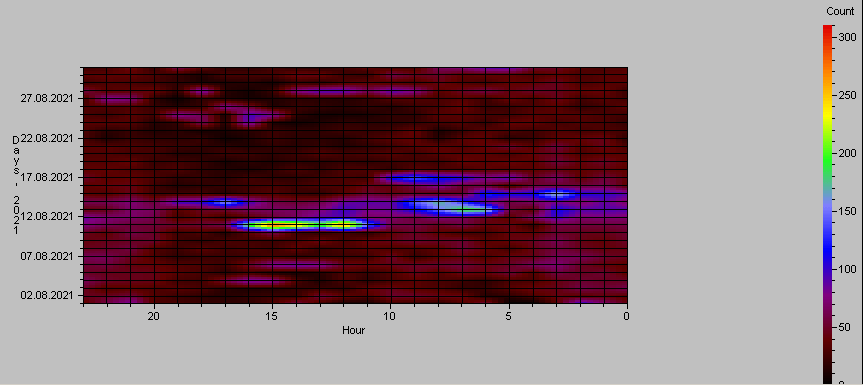
Figure 2 – Heatmap for radio meteor echo counts at 88.6 MHz for August 2021.
3 Listening to radio echoes on 88.6 MHz
Listening to the radio signals 1 to 3 times a day for one hour was done in order to control the level of the hourly rates, as well as to distinguish between periods of tropospheric passage and other natural radio interference. The total effective listening time was 59 hours.
The radio listening method shows a peak of Perseid activity on the night of August 13 to 14, with activity of about 150 meteor signals per hour. The origin of the high signal activity on August 28 is unknown (some increase in meteor activity on August 28 is also apparent from automatic observations). It is possible there has been an overlap of several small meteor showers. The peak around August 31 is probably due to the activity of the Aurigids (#0206).
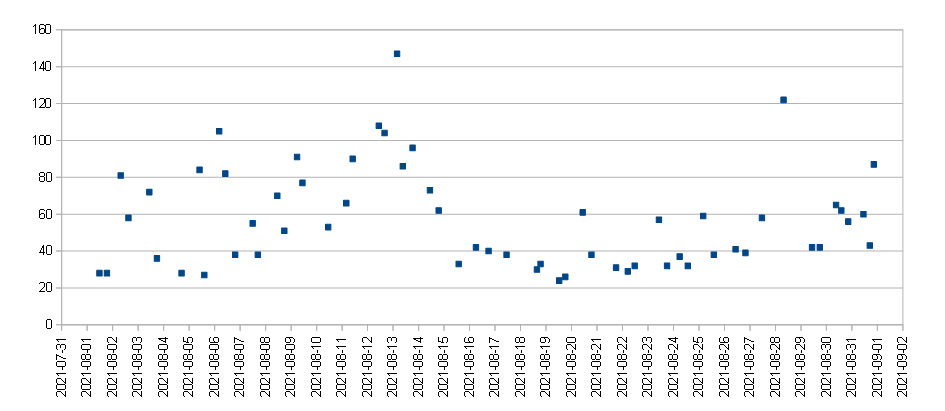
Figure 3 – The result with the calculated hourly numbers of echoes of meteors by listening to the radio signals for August 2021.
4 Fireballs
In order to quickly search for signals of the radio fireballs, the program SpectrumLab was running in parallel to the Metan program. Screenshots were saved every 10 minutes. The search for fireball events was performed visually by viewing many thousands of screenshots obtained over a month. Then, we selected fireball events from the log files of the Metan program. For fireball activity statistics, I have selected signals from the log files with a peak power greater than 10000 as fireballs and with a signal duration greater than 10 seconds. Figure 4 shows the daily activity of the fireball radio signals. Figure 5 displays one of the fireball radio echoes.
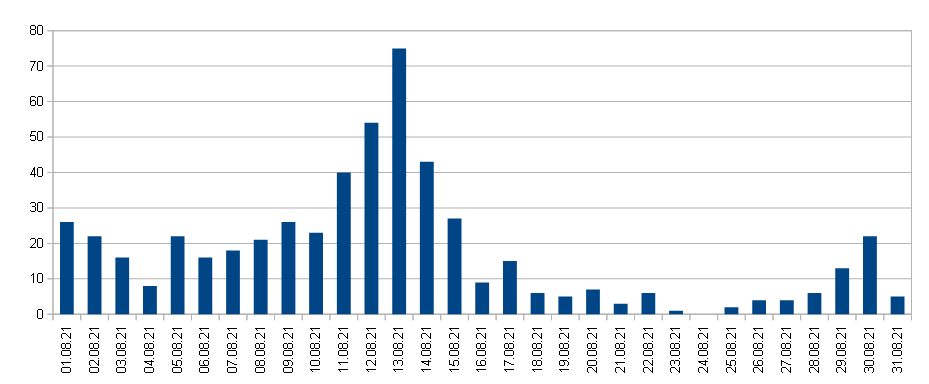
Figure 4 – Daily activity of radio fireballs in August 2021.
From the fireball activity profile, we can conclude that the peak activity of the bolides occurred on August 13, about 75 bolides were recorded that day. The peak of fireballs activity on August 17 is probably due to the KCG (#012), the peak on August 30 may be due to the AUR (#0206), when large particles cross Earth’s orbit one day earlier than the main mass of meteoroids with a peak activity on August 31 according to the IMO table (Rendtel, 2020).
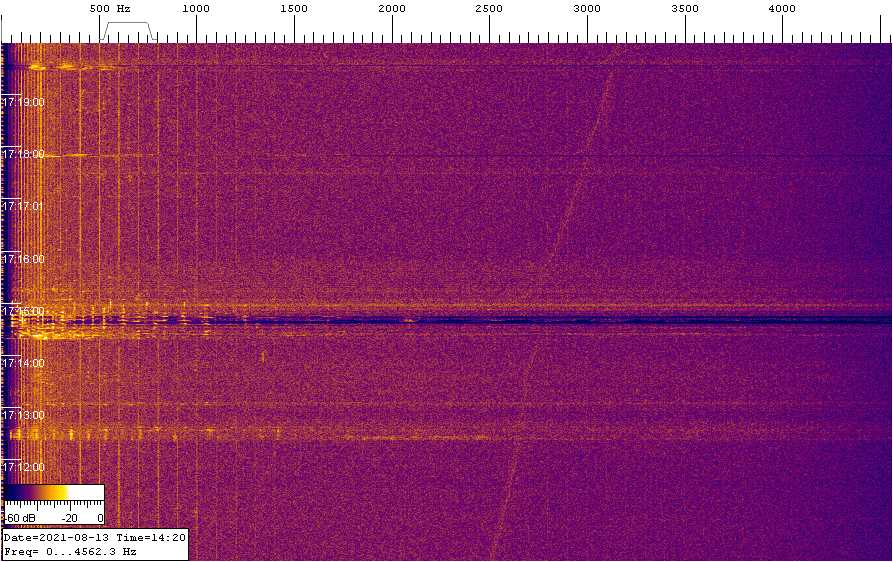
Figure 5 – Radio fireball recorded by SpectrumLab on August 13 at 14h15m UT.
5 Preliminary CAMS Data
Figure 6 shows the total daily activity of meteors from the CAMS video network data (Jenniskens et al., 2011). There is a noticeable correlation between the activity level of sporadic meteors and the activity level of shower meteors. The preliminary CAMS data has been used like it was available on September 12.
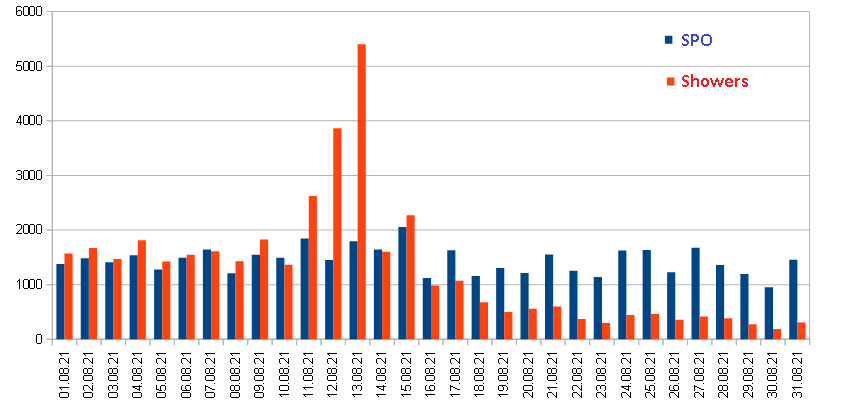
Figure 6 – Daily activity meteors of video networks CAMS in August 2021.
From August 1 to 11, the abundance of shower meteors was comparable to, or slightly above, the level of sporadic meteor activity. On August 12 and 13, the Perseids made the level of shower meteors nearly 2–3 times larger than the sporadic background. Between August 16 and 31, the shower meteors were 2–5 times less active than the sporadic background.
6 Conclusion
There is a satisfactory correlation between the methods of automatic signal detection and the method of listening to the radio echoes by manual counting of the number of meteor signals. The radio data correlates satisfactorily with the CAMS video network data. The advantage of the radio listening method is the efficiency in terms of “scanning” the level of signal activity, i.e., the observer knows in real time what is happening at the sky in the radio band. The profile of the fireball activity satisfactorily correlates with the activity profile of the shower meteors from preliminary the CAMS data!
Acknowledgment
I would like to thank Sergey Dubrovsky for the software he developed for data analysis and processing of radio observations (software Rameda). I thank Carol from Poland for the Metan software. Thanks to Paul Roggemans for his help in the lay-out and the correction of this article.
References
Jenniskens P., Gural P. S., Dynneson L., Grigsby B. J., Newman K. E., Borden M., Koop M., Holman D. (2011). “CAMS: Cameras for Allsky Meteor Surveillance to establish minor meteor showers”. Icarus, 216, 40–61.
Miskotte K., Sugimoto H., Martin P. (2021). “The big surprise: a late Perseid outburst on August 14, 2021!”. eMetN, 6, xxx – xxx.
Rendtel J. (2020). “Meteor Shower Calendar”. IMO.

